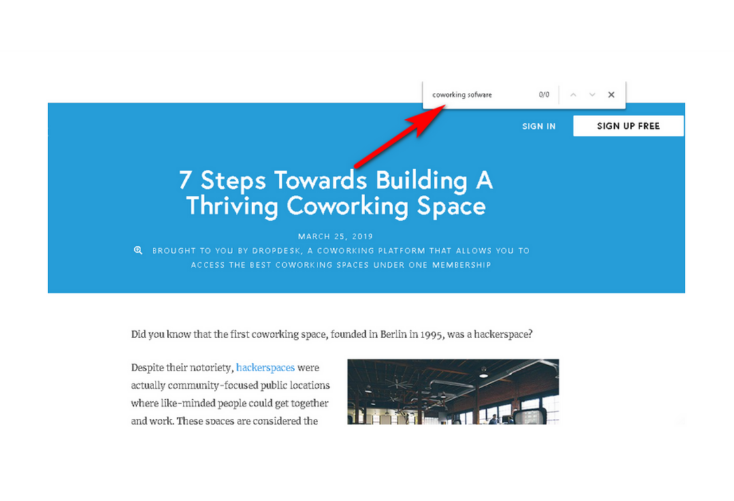- One marketing trend that’s set to make some noise in 2021 is voice search.
- Voice search utilises innovations like Google Assistant, Apple’s Siri, and Amazon’s Alexa.
- This guide explains the basics of voice search optimization and how to get started.
What’s on your digital marketing radar for 2021? Chances are, it involves a mix of search optimization, online content, social media, email, and video content.
There are a number of other marketing strategies to consider, and one particular trend that’s set to make some noise in 2021 is voice search.
Voice search utilises innovations like Google Assistant, Apple’s Siri, and Amazon’s Alexa. According to SEMrush, as voice-activated technology has gotten better, it’s also gotten more popular — more than half of households (55%) are predicted to own a smart speaker by 2022.
But is it really worth your attention?
“Absolutely!” says Cat Johnson, content marketing expert for the coworking sector. “Voice search is one of the top SEO trends for 2021. It should absolutely be on the radar of people who operate a coworking space of any size.”
Cat notes that while SEO strategies and target keywords depend on individual markets and space offerings, “voice search is not going away”, and operators should assume that people will be searching for terms like ‘coworking space’, ‘meeting room’, ‘office rental’, ‘event space’ and much more via their voice activated apps.
Voice Search 101
In this guide, Sergey Aliokhin from Visme, which specialises in visual content and communications, shares key information and actionable tips for flexible workspace operators who are looking to dive deeper into voice search optimization in 2021.
Voice Search – the Basics
The meaning of voice search is quite self-explanatory: you simply use your voice to find what you’re looking for on Google.
What makes it unique is that you have to interact with Google literally. You must ask Google specific commands that trigger a web search and provides a relevant answer.
For instance, “Hey Google, what is coworking?” — this type of query is ideal as it has a definitive answer.
It’s growing in popularity. ComScore reported that half of all smartphone users are engaging with voice search technology in 2020, while Google also reports that 27% of online users are using voice search on mobile globally.
That’s why website owners are eager to know how to optimize their web resources for voice search. However, there are three rules that you should be aware of before proceeding with optimization. Let’s review them briefly.
- Results depend on the device used: For example, if you ask Google “how to make a sandwich”, you will get a short (and possibly unhelpful) answer. But if you ask the same question using Google Home, you will get a detailed recipe for making sandwiches.
- Voice search is about top pages: Voice search suggests the answers based on top-ranking pages from SERPs. Moreover, 91% of the results are from Google’s top 5.
- Answers are taken from featured snippets: According to this analysis, 40.7% of answers come from featured snippets.
The next step is how to optimize your coworking website for voice search.
Coworking Website Voice Search Optimization
Even though voice search is becoming more popular, the technology is still in its infancy. This means there isn’t enough data to analyze keywords that people use for voice search.
What we do know is that voice search is limited to simple questions.
Here are 7 key tips for voice search optimization:
1. Create a Google My Business Account
Start by creating a Google My Business profile. This will help provide information for some of the inquiries people are likely to ask about your space. While you’re at it, Google My Business optimization can drive more searches for local businesses — ie. workspaces. In particular, work on your listings updates and earn reviews.
2. Track the Queries People are Asking
Voice search optimization is based on exploring the questions people search on Google and creating content accordingly.
So how do you find these questions?
Start with questions you already rank well for. For instance, if you rank for the query “coworking space near me”, this could be transformed into an interrogative form and optimized for voice search.
To find out whether your coworking website ranks for long-tail keywords, you can use the “Organic Keywords” report suggested by Site Explorer tool. When reviewing this report, filter the results in the following way: choose the first 5 SERP results and include interrogative words like “when”, “how”, etc.

If you want to go further with this research, you can explore the questions your competitors rank for using the Content Gap tool. Moreover, to find questions opportunities that nobody ranks for yet, use the “Questions” report from Keywords Explorer tool.

From the screenshot above, you can see the list of “questions” opportunities for the keywords “coworking”, “coworking space”, and “coworking space tips”. Go ahead and do this research for your own space.
3. Brainstorm Where these Answers Could be Included
The first condition of voice search optimization is that your content must answer the questions asked by your target audience.
Right before you proceed with the brainstorming, answer these three questions:
1) Could there be multiple answers to your top question(s)?
2) Can you add the answers to these questions on some of your blog pages?
3) Do you really need to answer these questions?
If you go to Google and type “how to open a coworking space”, you will see a featured snippet from Entrepreneur that suggests 7 tips. These tips would be a direct answer to your voice search question.

When it comes to optimizing a certain page for a specific question, you must first decide if it is worth it. The below post from drop-desk has content relating to tips on how to start a coworking space. Interestingly, there is no mention of the best coworking software solutions — but this query “best coworking software” is used as a voice search command.

To conclude, you should evaluate your blog and figure out if there are opportunities that can be optimized for voice search.
4. Answer Questions in Your Content
It is important to know how to adjust your content to the questions that people ask on Google. The best way to understand this is by reviewing the format of the questions that are suggested.
There are two key rules to follow:
1) Make answers short (no more than 29 words)
2) The answers must be grammatically correct
5. Don’t Forget about Optimizing Page Speed
Page speed plays an important part in voice search optimization. Backlinko analyzed 10,000 Google Home results and stated that the average voice search result page loads in 4.6 seconds (which is 52% faster compared to the average page speed result).
Google considers page speed as a ranking factor. Consequently, it ranks pages with better page loading speed higher. But when we are talking about voice search, Google mainly targets results from the pages that rank in the top five.
6. Link Building
You already know that Google tends to suggest voice search results only from the top pages. Therefore, backlinks are another important ranking factor.
There are plenty of tutorials on how to do link building outreach. Plus, you will need a specialized link building tool to help you automate the process of outreach, as it’s incredibly time consuming if conducted manually.
7. Add Schema Markup
You should help search engine bots crawl and understand your content easily. For this, you may need to enter a schema markup code (speak to your web developer for help on how to do this) but do be aware that 63.6% of voice search results don’t use schema markup at all, so it may not be necessary in the early stages.
Final Thoughts
Voice search optimization is a work in progress. One thing we do know is that this is a growing market, and it’s expected to make headway in the coming year. If you’re focused on user experience and you’re eager to explore new marketing techniques in 2021, voice search optimization should be high on your list.
Further reading:


 Dr. Gleb Tsipursky – The Office Whisperer
Dr. Gleb Tsipursky – The Office Whisperer Nirit Cohen – WorkFutures
Nirit Cohen – WorkFutures Angela Howard – Culture Expert
Angela Howard – Culture Expert Drew Jones – Design & Innovation
Drew Jones – Design & Innovation Jonathan Price – CRE & Flex Expert
Jonathan Price – CRE & Flex Expert













